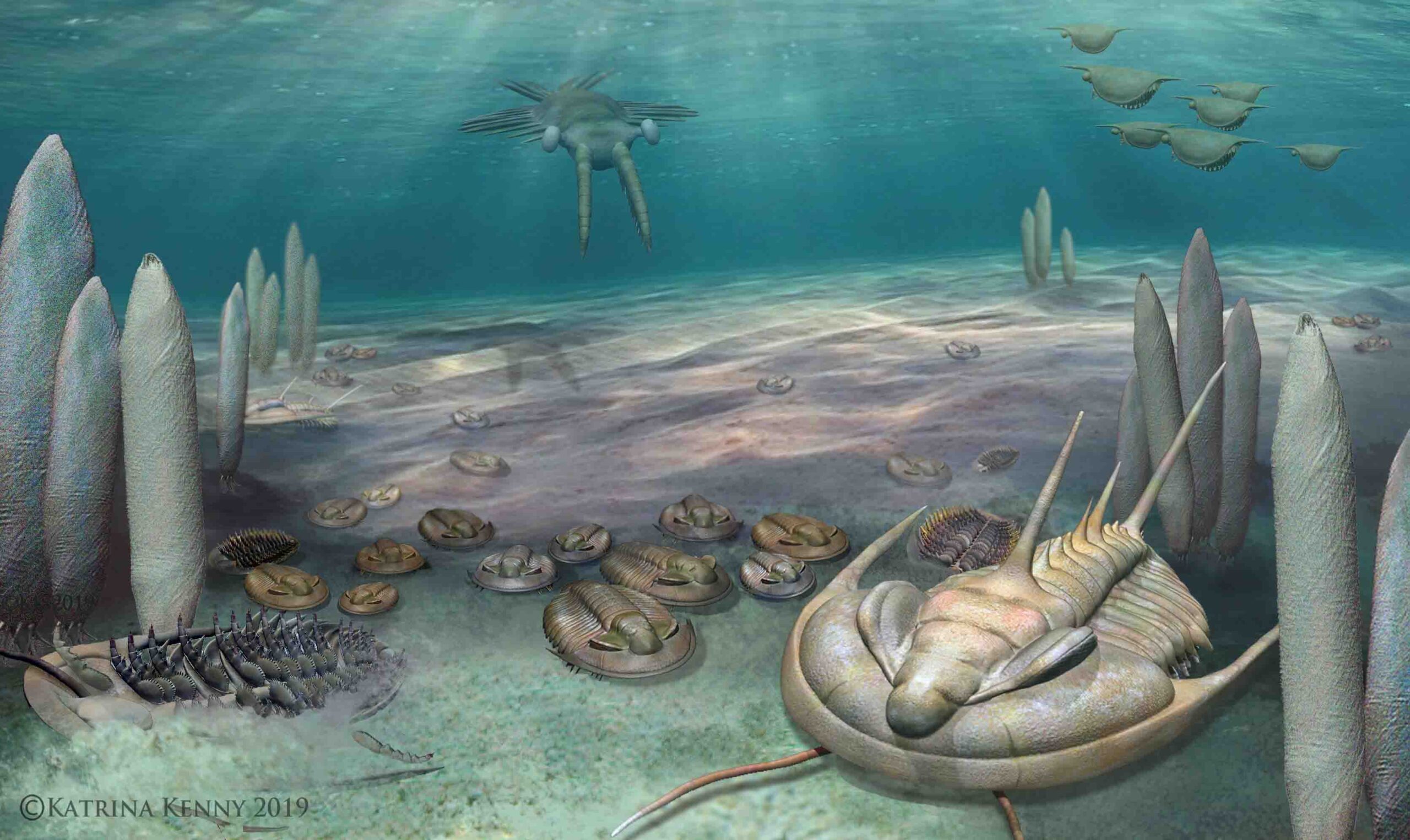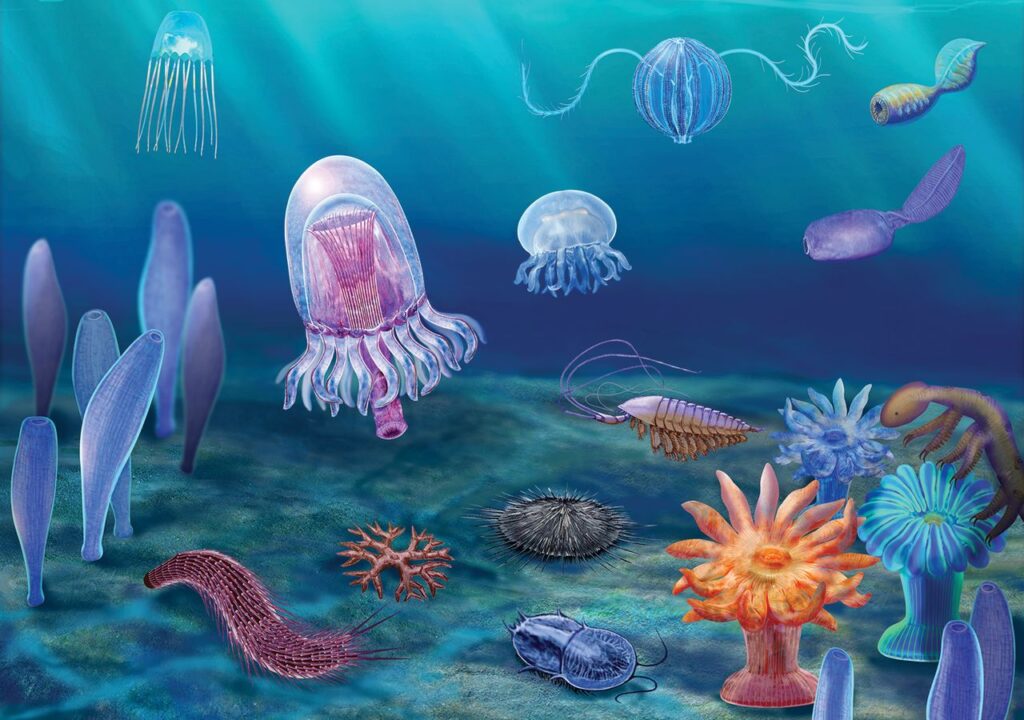Cambrian ‘SPICE’ Event Reveals Cause of Oceanic Oxygen Depletion
Ancient Events, Modern Par
This paper shows exactly how ancient mechanisms of worldly systems are relevant to modern marine systems and further emphasizes how the need for management of nutrient dynamics goes a long way to help protect marine ecosystems today, most particularly in the coastal areas where activities of men actually affect the health of the environment.
**Understanding the Cambrian ‘SPICE’ Event**
In fact, such a plunge of the oceanic oxygen concentration did take place in the course of the Cambrian ‘SPICE’ event, about 500 million years ago. An article published on 21 June 2024 in *One Earth* has greatly clarified that event. Enhanced phosphorus recycling underpinned worldwide oxygen depletion, according to the authors of a new study: “Cascading oxygen loss shoreward in the oceans – insights from the Cambrian SPICE event”.
**Role of Phosphorus in Oxygen Depletion**
“The release of phosphorus from sediments intensifies under anoxic conditions and created vicious cycles of accelerated phosphorus release, which increased an utterly decoupling of phosphorus recycling with oxygen, thereby supporting phosphorus accumulation under a dominantly sulfidic water column; an exacerbating factor that may well explain this pattern of phosphorus inclusion,” confirmed Associate Professor Tais W. Dahl from the Globe Institute, who was the leading author of the research. This study has been told to be representative in the very sense that it provides proper understanding to the people about the way nutrient dynamics could cause strong impacts on the health of oceans.
**Relevance to the Present-day Seas**
The studies ring alarmingly similar in their message to today’s oceans, anthropogenic perturbations of nutrient dynamics, and placing the oceans at risk for massive, widespread anoxia. Such condition would be of a far greater threat to the coasts than to the open ocean. Yet, massive global anoxia is still not put forward as an impending threat at this time, as a result of the present phosphorus limits and the current oxygen atmosphere high. Nonetheless, this study stresses the need for knowledge over the nutrient cycles and the sediment processes to protect the health of the seas.
**Managing Marine Ecosystems**
Nutrient-sediment-oxygen relationships are quite complex; hence, their preparation of relevant management action plans for marine ecosystems must be taken into consideration. In particular, coastal zones are subjected to great changes through inputs, both agricultural and industrial, and high levels of urbanization. Those inputs must therefore be managed with special care to bypass conditions supportive of the depletion of oxygen, and resultant stress to marine life.
**Linking the Past and Present**
This research is also taken from the model of comparing ancient and modern marine environments, which supports current oceanic changes. That can help fine-tune current predictive models that can possibly be in a future scenario, and it also informs policy on how to fortify marine ecosystems from modern environmental challenges. The Cambrian ‘SPICE’ acts as a historical precedence, putting scientists in a better position to anticipate the impact of future oceanic anoxia and mitigate it.
**Implications for Current Marine Policies**
Implications of such findings are immense on modern policies for marine life and the marine environment, indicating that maintaining healthy oxygen conditions in our oceans will need tight controls on nutrient inputs—most importantly, phosphorus, a trace element best known for causing harmful algal blooms and subsequent devastating oxygen depletion. Effective policies should include advanced treatment processes of wastewaters, sustainable agricultural practices, and the decrease of industrial discharges into the waterways.
Nutrient Dynamics in Coastal Regions
Habitual human activities are concentrated along coastlines, and thereby coastal areas mostly become vulnerable to nutrient overloads. Such eutrophication caused by excessive nutrient input may give rise to hypoxic or anoxic conditions, which may harm marine life and throw a wrench in the ecosystems. Hence, a good understanding of the nutrient dynamics in these areas is very important in coming up with management strategies for the mitigation or reduction of human actions’ impacts on marine environments.
**Phosphorus in Marine Ecosystems**
Phosphorus is a necessary element for marine life. However, in excess, it leads to harmful algal blooms that affect life by depleting oxygen during the growth of the algae and while decaying. This results in eutrophication, which eventually means a dead zone is created, and life cannot thrive in that area at all. Therefore, research in the Cambrian ‘SPICE’ event can, therefore, serve as important insight into how phosphorus cycling could impact marine ecosystems and offer lessons in the management of present and future nutrient loads.
**Developing Sustainable Solutions**
Develop sustainable solutions in order to protect marine ecosystems from the harmful impacts of nutrient pollution. This may include means for enhancing buffer zones in the wetland and mangrove vegetation that are present to filter off extra nutrient supplies before the extra supplies eutrophicate the ocean or employXA best management practiceXin agriculture, such as precision farming and controlled-release fertilizers.
**Enhancing Predictive Models**
Events such as Cambrian ‘SPICE’ can further develop predictive models of the impact of nutrient pollution events on marine ecosystems and assist policymakers in the development of targeted strategies to prevent deoxygenation from occurring in sensitive regions. Historically informed models can improve the capacity of scientists to understand potential future scenarios given current environmental trends and thus enable proactive efforts to prevent them.
**Collaborative Efforts in Marine Conservation**
The issues related to nutrient pollution can be solved only through properly coordinated actions between scientists, decision-makers, and industry and stakeholder leaders. Actions leading to the development and application of effective reduction policies on nutrient inputs, with sustainable practices developed under consensus from the above-mentioned stakeholders, will be promoted through awareness-raising campaigns oriented to ensure that communities are informed of marine ecosystem protection related to impacts on the environment and the measures that each one could make to reduce this impact.
**Future Research Directions**
Future studies should be directed at resolving, more clearly, the linkages between nutrient dynamics and oxygen levels and how it relates to marine health. Long-term monitoring in the water level of the coastal and open oceanic areas helps derive useful information for inference about the consequences of nutrient pollution, which in turn gives the emerging trends. Oceanography is blended with geology, biology, and environmental science, identifying the underlying factors of oceanic oxygen depletions.
Conclusions: A Call to Action Thus, research into the Cambrian ‘SPICE’ event is highly pertinent to ascertaining mechanisms of oceanic oxygen depletion. The outcomes emphasize that good management of nutrient inputs to marine environments needs to be enabled to avoid such fates. By learning from the past, we may hopefully figure out how to keep our oceans healthy in the future. Reference:
Also read: Unveiling Adam’s Bridge: The Astonishing Rediscovery of the Land Link Between India and Sri Lanka
Cascading shoreward oxygen loss in our oceans: insights from the Cambrian SPICE event. One Earth, 21 June 2024 L. Sørensen, A.; Dahl, T. W.
DOI: 10.1016/j.oneear.2024.05.011
Other Sources: ScienceDirect







One thought on “Insights from the Cambrian SPICE Event: Understanding Oceanic Oxygen Collapse 500 Million Years Ago”